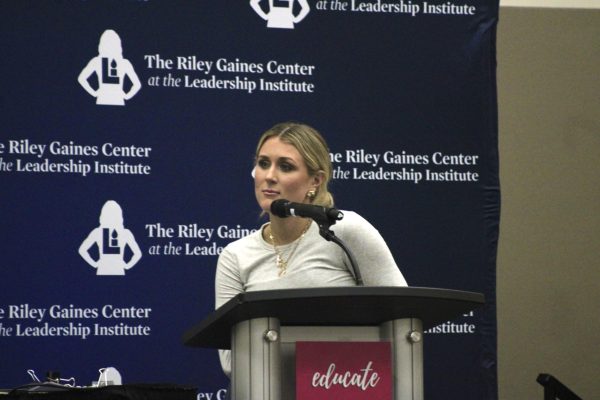Engineering Center display shows off student-built machines
In the Engineering Center, technology is on display in almost every facet, from the exposed piping to the metal and concrete aesthetics. But one wall stands apart from the rest. The display wall features a selection of projects made up mostly of EGR2800, commonly called Sophomore Design, students’ final projects and are the result of Oakland University’s unique engineering program.
Out of the 20-30 projects made per semester, only a select few are hand-picked by Associate Professor Doctor. Osamah Rawashdeh and his teaching assistants.
The idea started during the designing stage of the Engineering Center in 2011. After a project is picked out and the team of students donates the project to the school, the project is then upgraded.
“It gives [the sophomores] a great hands-on experience to actually apply what they learned from different engineering disciplines before they break up into their majors.” Rawashdeh said. “Student projects are not usually designed to work more than enough time to get a signature from a TA, so we actually put a lot of effort in after students are done to get the [the projects] to a state where they can run continuously.”
To get the selected machines to work reliably while on display, they are handed off to teaching assistants like Yazen Alali. He stated he enjoys working on them, and they help paint a good picture of the program and engineering as a whole.
“Most of the good looking projects go to the display, but sometimes a 2800 project doesn’t have a repeated functionality or the size of it can’t fit inside the display box, so that doesn’t go to the display,” Alali said.
One of the projects Alali and other TAs have worked on is the Six DOF Robot Arm, which was made by a team of six including Brandon Elias.
“It was a lot of fun designing and 3D printing the arm’s components, and seeing it come to life was a really wholesome feeling for all of us,” Elias said. “The most challenging part was the electrical portion. We had one electrical engineering major on our team, but our team was determined to figure things out together. I learned a lot about how to wire the system together and how the arduino board worked throughout this project. It was very challenging, but it led us to gain lots of experience on other perspectives of engineering.”
Jeanne Beau and her holographic display stand out from most of the machines on display as it was not made in the EGR2800 class.
“At the time, [ Rawashdeh] was interested in having a holographic display which was similar to one he has seen at an automotive showcase,” Beau said. “He not only wanted to present the 2800 projects, but anyone that wanted to help with the movement to promote OU SECS. So not only did I find this project cool, but I too wanted to join contribute.”
Along with showing off the work students have done in the engineering program, the display wall also helps as a visual aid to the many K-12 students who visit the school.
“These things are very popular,” Rawashdeh said. “all the time I see kids down there and waving their hands while waiting for the bus or while coming in.”






